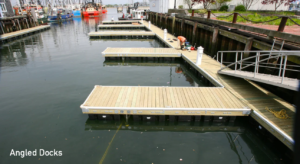From primitive scrubbing by the river to smart washing machines, laundry has always been one of humanity’s most essential chores. Today, Modern Laundry of Windsor can be both effective and beautiful with smart technology and thoughtful services.

Besides simplifying processes, many modern laundry services prioritize sustainability by reducing chemical use and using biodegradable detergents. They also recycle water and are committed to customer satisfaction.
Streamline your laundry space with washer and dryer sets in a modern finish. White, stainless steel, black glass, and other designs can complement your home’s décor while blending seamlessly with the rest of your space. Some washers even have WiFi functionality, allowing you to monitor and control your laundry remotely using a mobile device.
Many modern washing machines feature customizable wash settings that prioritize your fabric’s needs. You can tailor the temperature, spin cycle, and detergent concentration to ensure that your clothes are cleaned thoroughly without overusing resources. These features can help you save money on utility bills and extend the life of your clothing.
Modern laundry machines also reduce the risk of accidents by automating the loading and unloading process. They often have an emergency stop button that can be pressed in the event of a mechanical malfunction, significantly decreasing the likelihood of serious injury. They may also have a variety of sensors that can alert employees to potential hazards, further decreasing the risk of worker injury.
If you’re looking to upgrade your laundry room with the latest technology, consider a stackable washer and dryer set. These space-saving solutions offer full laundry functionality in a compact footprint, making them ideal for tight spaces. They can even be fitted with a door, allowing you to hide your washer and dryer away when not in use. If you’re ready to make the switch to a new washing machine, be sure to sell your old one on Digi2L for cash in exchange for the future of laundry technology.
Smart Storage Solutions
Modern laundry solutions offer a wide range of benefits to residents. For starters, they reduce the need to juggle chores by taking over some of the most time-consuming tasks. Plus, many provide access to state-of-the-art machines that deliver a more efficient washing and drying experience. From remote control to real-time monitoring, these appliances are designed to reduce wait times and increase the quality of the finished product. They also offer maintenance alerts that notify residents when their machines are ready to be used and can help reduce operational costs by lowering repair and energy consumption.
In addition to reducing operating costs, these advanced machines are more environmentally friendly. Traditional washing practices require significant water and energy use, while detergents contain phosphates that can damage aquatic ecosystems when they enter natural waters. New, eco-conscious appliances and services utilize low-water washes and energy-efficient dryers to minimize environmental impact. They also incorporate water recycling systems and utilize biodegradable detergents to appeal to environmentally conscious consumers.
Laundry services offer unparalleled convenience for busy professionals and those with limited space to own their own washers. Intuitive mobile apps enable users to schedule pickups and deliveries at a time that fits their schedule, eliminating the need to plan ahead or worry about running out of space to wash clothes. Subscription models further streamline the process, providing consistent and predictable service and cost savings over time.
Aside from the convenience, laundry services can boost property values by offering a higher-quality living experience. Spotless, modern equipment conveys a sense of quality and demonstrates that the building is well-maintained and cared for. It also makes a strong first impression on prospective residents and tenants.
Bold Wallpaper
A laundry room offers the perfect opportunity to experiment with bold wallpaper prints you might be hesitant to incorporate in your living space. Because laundry rooms are typically small and can be closed off, they are a great place to play with a vibrant color scheme, whimsical design, or unexpected pattern. If you do opt for a loud wallpaper in your laundry, choose a solid color cabinet to tone down the look or add contrast and definition to the room.
If you want to add a pop of color to your laundry, try an organic-inspired design that will bring natural energy to the room. A lemon tree print is fun and playful, while a floral motif adds classic beauty to the space. Alternatively, create a clean and modern laundry room with a grey wallpaper that pairs with shaker cabinet doors for an elegant look.
Even if you don’t want to go as bold as an oversized floral print, a smaller geometric print can add personality to your laundry. The repeated shapes in a modern wallpaper design will help break up the white cabinets and add definition to the space, making it feel bigger.
While creating contrast with paint can be easy, wallpaper presents a unique way to create color contrast by introducing pattern and shape. If you’re unsure of how to pair a modern wallpaper with your cabinetry, consider adding an extra layer of texture by adding classic beadboard wainscoting.
A dark and moody laundry room is a stylish alternative to an all-white space. To tie the look together, use the same shade of paint on both the walls and cabinetry. To further enhance the room’s drama, complement the dark wallpaper with a coordinating shade on switch plates and other hardware.
Herringbone Patterned Tile
Herringbone patterned tile delivers texture and movement to any space. The classic pattern complements many styles from traditional to modern and adds a touch of drama to any laundry room. Use it on the floor or wall for a sophisticated finish.
White herringbone tiles are a classic choice for laundry rooms, but you can also experiment with other colors and textures. Hexagon tiles are another stylish option that can be used on a backsplash for a pretty look behind your washer and dryer. These tiles have a unique shape that resembles garden pavers and stones for a natural look. Try them in a bold color to make a statement or in a neutral shade for a more subtle effect.
If you want to go big, consider extending your herringbone tile all the way up the walls like Britt Design Studio did. This bold design helps to create a focal point in the space while keeping your laundry room feeling bright and clean.
Tile is a popular choice for laundry rooms because it is easy to clean and durable. It’s also bacteria-resistant which is important for laundry spaces where clothes, towels, and rags are often soaked with water or cleaning solutions. It can also prevent mold and mildew buildup.
For a stylish option, consider using dark floor tile in your laundry room. Black herringbone tiles add a touch of contrast and work well with bright colors or muted tones for a cozy feel. Brick-style tiles are also a popular choice for laundry rooms. These tiles evoke timeless beauty and durability and come in a range of earthy tones that mimic traditional brick flooring. This type of tile is also a great choice for modern farmhouse or cottagecore style homes.
Dark Cabinets
The modern laundry room can benefit from a moody color scheme that creates a sense of drama. Choose a dark cabinet finish and pair it with coordinating appliances and hardware for continuity. Use a herringbone patterned tile on the floor and wall for visual interest. This look pairs well with neutral wallpaper or even a subtle solid-color paint to maintain design versatility.
Many people assume that dark cabinets are only suitable for contemporary kitchens, but they work beautifully in a wide range of styles. They’re versatile enough to complement rustic farmhouse designs as well as sleek contemporary ones. Dark finishes are also forgiving when it comes to smudges and scratches, making them the perfect choice for high-traffic areas.
Light and bright cabinet colors can make small rooms feel cramped, but dark shades can actually expand the space visually. If you’re interested in incorporating dark cabinets into your kitchen, consider using a white or gray wall color to offset the rich tone. You can also opt for a dark shade with a softer finish or one that contains flecks of natural wood for visual contrast.
Despite the current trend toward minimalist design, dark cabinets can offer a timeless appeal that stands up to shifting fashions. They also create striking visual contrast with lighter countertops, backsplashes, and flooring options.
Keep your modern laundry room functional and stylish with a combination of open and closed storage solutions. Use upper and lower cabinets to conceal clutter, keep household items out of children’s and pet’s reach, and hold extra supplies. Combine this practical storage with decorative accents such as laundry-themed artwork or potted plants for a cohesive and appealing space.


